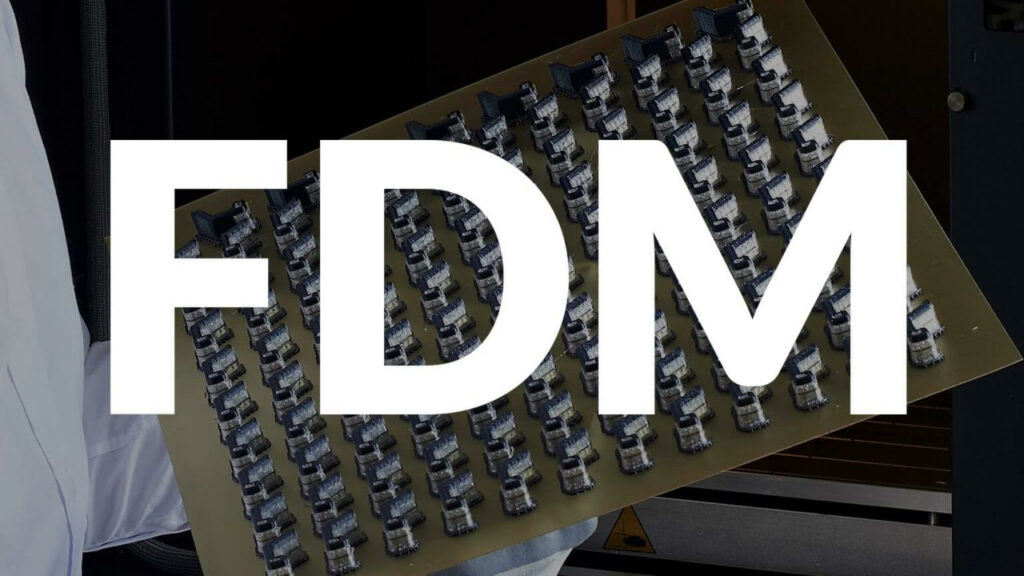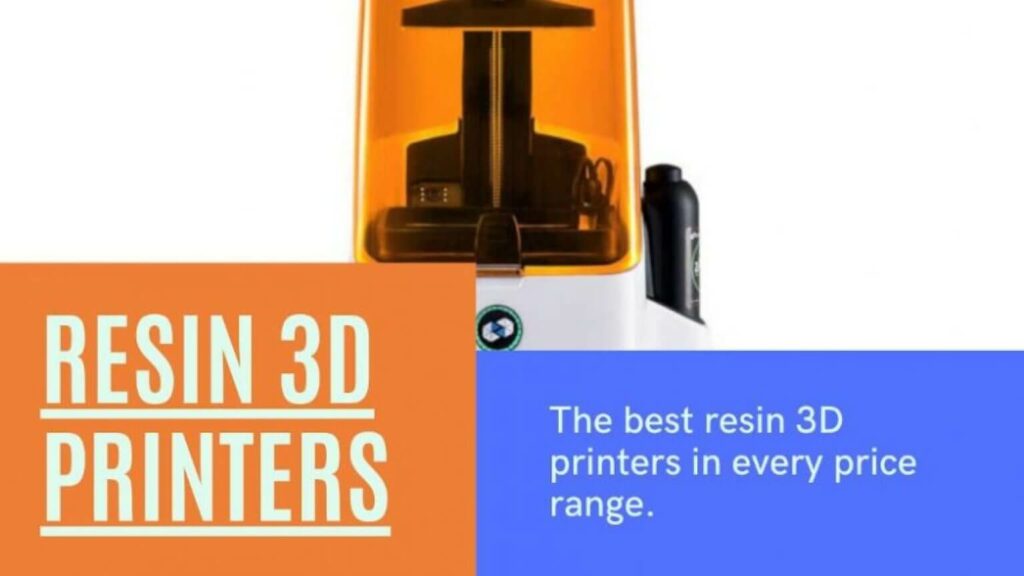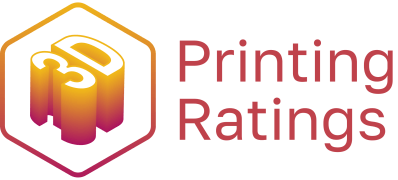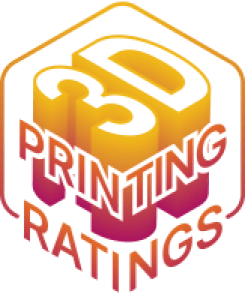When it comes to 3D printing, there are two main options: filament and resin printers. You may be wondering, “which is better?” Well, that all depends on what you’re looking for. Each has its own set of pros and cons, so you’ll need to decide which is the right fit for your business by comparing Resin vs. Filament. Here’s what you need to know before choosing a printer.

What Is 3D Printing?
Three-dimensional printing, also known as additive manufacturing, is a process that creates a three-dimensional object from a digital design. It’s used in a variety of industries, including product design, engineering, architecture, and more. In other words, you’re creating a 3D object by adding material to a build platform layer by layer.
The most common type of 3D printing uses fused filament fabrication (FFF) technology. It’s also called fused deposition modeling (FDM) because it uses a plastic filament and a heated nozzle to create the object. The filament is extruded from the tip of the nozzle in a series of very thin strands. A computer-controlled heat source inside the nozzle melts the plastic, and the printer moves the nozzle above the printing surface. The printer stops the flow of plastic, and the computer tells the nozzle to move in a pattern, usually back and forth or in a spiral. The printer then heats the plastic again, and the plastic falls onto the printing surface in the pattern specified by the computer program. As the plastic falls, it cools and adheres to the surface.
When the printer has laid down enough plastic to create the thickness of the designed object, it moves the nozzle away from the printing surface and begins to heat the plastic again. The printer then moves the nozzle back above the printing surface and starts the printing process over again to create the next layer of the object. Compared to other manufacturing methods, 3D printing is relatively inexpensive and can be completed in a short amount of time. It’s also versatile, so you can produce a variety of different goods, including prototypes, tools, and end-use goods.

Filament 3D Printers
A 3D filament printer uses a spool of plastic filament that is heated and extruded through a nozzle to create the 3D model. This type of printer is great for creating prototypes, small numbers of end-use goods, and customized goods using a variety of different materials. Filament 3D printers are also very cost-effective and easy to use, making them a great option for beginners. Many types of filament are available, including PLA, nylon, carbon fiber, and more. They are also compatible with most operating systems, including Windows, Mac, and Linux.
3D filament printers are typically priced between $300 and $10,000 and can have build areas that range from as small as 6 x 6 x 6 inches to as large as 10 x 20 x 8 feet. Generally, they’re best used for small parts and are less suitable for making large objects. Keep in mind that with this type of printer, you’ll need to purchase the plastic filament, so you’ll need to factor that into your budget when choosing a printer. You’ll also need to ensure that your business has the necessary room for a large printer. Finally, you’ll need to be prepared for the fact that 3D filament printers are less reliable than resin printers.

Resin 3D Printers
Resin is a chemical that’s hardened by light and acts as a resin 3D printer’s build material. This type of printer is well-suited for production environments and is generally priced between $20,000 and $100,000. Resin 3D printers are often used in fields like dental and medical because of their high accuracy, ease of use, and ability to print in multiple materials in one go. They are also used for manufacturing engineering, prototyping, and artistic applications.
Some resin printers are fully automated, allowing manufacturers to streamline the production process, while others are manually controlled. The build plate size will vary between models, but the most common build plate size is 8 x 10 x 5 inches. Remember that resin 3D printers require a large amount of space, so make sure you have enough room in your business before purchasing. This type of printer is very reliable, so you won’t have to deal with the issues that plague filament printers. You’ll also only need to buy resin once and won’t have to pay for the continual cost of filament. Keep in mind that you’ll need to buy a special UV lamp to process the resin, so you’ll need to factor that cost into your budget as well.
Pros and Cons of Filament 3D Printing
Pros:
- Cost-effective – Since you’ll only need to buy filament once and won’t have to replace parts, filament printers are the most cost-effective type of 3D printer. Since you’ll only need to buy filament once and won’t have to replace parts, filament printers are the most cost-effective type of 3D printer.
- Versatile – Since filament can be made from a variety of different materials, you’ll have a lot of versatility when it comes to material choice.
- Great for prototypes – You can use a variety of different types of filament to produce end-use parts as well as prototypes.
- Inexpensive – Filament is much less expensive than resin, so it’s a great option for businesses that are on a tight budget.
- Easy to use – Filament printers are relatively easy to use and are great for small businesses that need to produce prototypes and small numbers of end-use goods.
Cons:
- Poor part quality – One of the biggest cons of filament printers is that they have a tendency to produce parts with a poor surface finish. This is due to the nature of the material and the fact that the printer creates layers of plastic by pouring molten plastic onto a build plate. This can result in parts that have surface defects, such as bubbles and gaps.
- Slow – Compared to resin printers, filament printers are relatively slow. They also require more maintenance than resin 3D printers.
Pros and Cons of Resin 3D Printing
Pros:
- High-Quality Parts – Since resin 3D printers create the model by shining light through a photopolymer, the parts have a very smooth finish.
- Scalable – You can produce large parts with a resin 3D printer, so it’s a great option for businesses that want to produce large quantities of the same piece.
- Durable – Resin parts are very durable, which makes them great for end-use products.
- Repeatability – Since the process for making a part is the same each time, you’ll be able to produce consistent products.
- Versatility – You can use a variety of different resins in a resin 3D printer. This allows you to create a wide range of products.
Cons:
- High cost – Resin 3D printers are more expensive than filament printers. This is due to the fact that they use more advanced technology.
- Space-intensive – Resin 3D printers are very large and take up a lot of space.
- Slow production – Compared to filament printers, resin 3D printers are very slow.

Resin vs. Filament What Should You Choose?
When deciding which type of 3D printer is right for your business, you’ll need to consider a few factors. First, you’ll need to decide how much space you have available. Next, think about how often you’ll be using the printer. You’ll also need to think about how much money you’d like to spend. If you plan to use your 3D printer for large-scale projects or production work, you’ll likely want to invest in a high-end printer with large build volumes. On the other hand, if you’re mainly interested in experimenting with 3D printing or creating small prototypes and models, a low-end model will likely work just fine.
You should also consider the printer’s resolution and speed. These factors will impact the quality and speed of your printed products. A high-resolution printer will likely yield better results if you’re printing large objects or working with detailed designs. On the other hand, if you’re printing small and simple items, a low-resolution printer will likely be just fine. The speed of your printer will also impact your workflow. You’ll likely want to go with a high-speed model if you’re printing lots of items or working with large designs. Once you’ve considered these factors, you can choose the type of printer that best fits your needs. I personally prefer the quality of Resin prints over Filament. The speed of a filament 3D printer is great, but you can’t beat the quality and ease of use that a Resin 3D printer provides.

